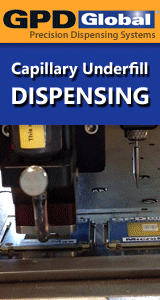Electronics Manufacturing Technical Articles
Papers and articles related to SMT, PCB & EMS industry.
- SMTnet
- »
- Technical Library
1794 SMT / PCB Assembly Related Technical Articles

Tampere University of Technology
TUT is Finland's second-largest university in engineering sciences located next to the Technology Centre Hermia, including a large Nokia research facility.
Tampere, Finland
EECS at University of California
The Department of Electrical Engineering and Computer Sciences (EECS) at UC Berkeley offers one of the strongest research and instructional programs in this field anywhere in the world.
Berkeley, California, USA
Founded in 1865, NOKIA is a Finnish multinational communications and information technology company.
Espoo, Finland

Auburn University is a comprehensive land-grant institution with primary missions including instruction, research, and extension/outreach.
Auburn, Alabama, USA

Solder pastes, solder preforms, solder spheres, soldering fluxes, electrically-conductive adhesives. All alloys: tin-lead, lead-free, indium alloys, and more.
Utica, New York, USA

BEST offers professional rework, repair and prototype builds of PCBs. Our expertise is on BGA rework and QFN rework. Our experienced instructors teach professional soldering classes as we are an IPC certified training center
Rolling Meadows, Illinois, USA

PCBCart, a highly skilled PCB Fab, Parts Sourcing & Assembly services provider for global companies, fabricates 23k+ different PCB designs each year, and are committed on the quality & performance of every circuit board it printed
Hangzhou, China
Pages: 1 2 3 4 5 6 7 8 9 10 11 12 13 14 15 16 17 18 19 20 21 22 23 24 25 26 27 28 29 30 31 32 33 34 35 36 37 38 39 40 41 42 43 44 45 46 47 48 49 50 51 52 53 54 55 56 57 58 59 60 61 62 63 64 65 66 67 68 69 70 71 72 73 74 75 76 77 78 79 80 81 82 83 84 85 86 87 88 89 90 91 92 93 94 95 96 97 98 99 100 101 102 103 104 105 106 107 108 109 110 111 112 113 114 115 116 117 118 119 120 121 122 123 124 125 126 127 128 129 130 131 132 133 134 135 136 137 138 139 140 141 142 143 144 145 146 147 148 149 150 151 152 153 154 155 156 157 158 159 160 161 162 163 164 165 166 167 168 169 170 171 172 173 174 175 176 177 178 179 180









